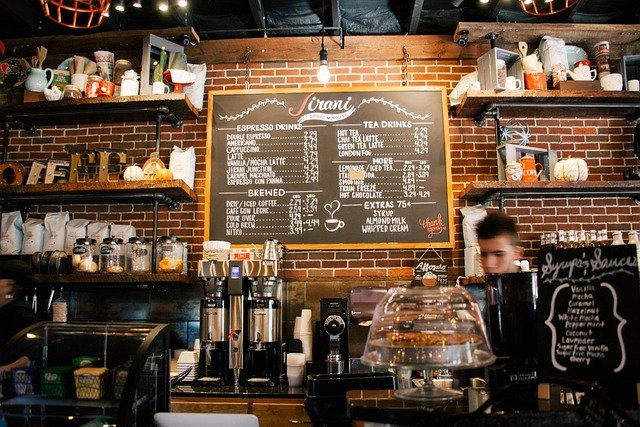Designing beverage lists that elevate nonalcoholic choices
Well-crafted beverage lists can change how guests perceive nonalcoholic options, moving them from an afterthought to a deliberate part of the menu. This article outlines practical approaches to sourcing, flavor design, sustainability, and cost control for beverage programs that prioritize creative nonalcoholic beverages.

Creating a beverage list that highlights nonalcoholic choices requires intentional thinking about sourcing, flavor balance, and how drinks fit into the overall dining experience. Rather than treating mocktails as secondary, a deliberate menu strategy positions nonalcoholic beverages as thoughtfully composed items that reflect seasonality, local producers, and clear procurement practices. Attention to mixology techniques, fermentation, and spice-driven profiles helps nonalcoholic drinks stand on their own, while menu placement and descriptive copy guide guest expectations and enjoyment.
How does sourcing shape nonalcoholic beverage lists?
Sourcing is the foundation of any beverage program. Prioritize relationships with suppliers who can provide consistent, high-quality ingredients such as artisanal syrups, house-made shrubs, cold-pressed juices, and unique mixers. Local farms and small-scale producers often provide produce with stronger flavors that can translate into more interesting nonalcoholic beverages; for example, a locally grown apple cultivar can yield a more complex shrub than a generic wholesale variety. Procurement strategies should balance reliability and novelty: secure staple goods from dependable distributors while reserving a portion of the menu for rotating, locally sourced items that reflect changing availability.
How can local and seasonality improve beverage menus?
Seasonality and local sourcing give beverage lists a narrative and reduce reliance on long-supply chains. In spring, focus on floral and green notes—elderflower cordials, nettle infusions, or cucumber and mint compositions. In autumn, highlight roasted, spiced, or fermented profiles such as apple kombucha blends or chai-spiced shrubs. Using seasonal produce can also reduce costs and waste: tomato or berry reductions made during peak harvests will be more flavorful and economical. Clearly communicate seasonal items on the menu to set guest expectations and create a reason to return.
How to incorporate sustainability and procurement practices?
Sustainability should inform procurement and operations. Choose suppliers that use regenerative farming or minimal packaging, donate or repurpose byproducts (e.g., citrus peels for candied garnishes), and provide transparent sourcing information. Implement inventory practices to avoid spoilage—batch syrups and shrubs in measured lots, use FIFO (first in, first out), and track usage patterns to adjust order quantities. Sustainable choices often resonate with guests and can be reflected in menu language, but avoid unverified or subjective sustainability claims.
How do spices, fermentation, and flavors enhance nonalcoholic drinks?
Spices and fermentation are powerful tools for depth and complexity. Fermented bases—kombucha, kefir water, low-ABV shrubs—introduce acidity and umami characteristics that lift a drink. Spices like grains of paradise, star anise, or cardamom provide warmth and aromatic intrigue without alcohol. Layering techniques—acid balance, bitter components, aromatics, and mouthfeel agents like glycerin or aquafaba for texture—help craft beverages that feel composed. Taste tests and iterative adjustments ensure each flavor element complements the whole.
What mixology and pairings work with nonalcoholic beverages?
Approach nonalcoholic menu items with the same pairings mindset used for cocktails and wine. Think about acidity, sweetness, texture, and aromatic intensity when recommending beverages alongside dishes. A herbal nonalcoholic spirit blend works well with lighter seafood or salads, while a smoked tea-based drink can pair with grilled vegetables or heartier proteins. Train service staff to suggest pairings and to describe flavor profiles concisely so guests understand how a nonalcoholic beverage complements their meal.
When cost control and supplier selection are part of menu planning, it’s useful to compare common products and providers to guide procurement decisions. Below is a practical comparison of widely used nonalcoholic beverage products and mixers with estimated retail cost ranges to help inform purchasing and menu pricing.
| Product/Service | Provider | Cost Estimation |
|---|---|---|
| Nonalcoholic distilled spirit (e.g., Seedlip) 700ml | Seedlip | $35–$45 per bottle |
| Nonalcoholic spirit alternatives (e.g., Lyre’s) 700ml | Lyre’s | $28–$45 per bottle |
| Gourmet flavored syrups (700ml) | Monin | $6–$12 per bottle |
| Premium mixers (200–500ml bottles) | Fever-Tree | $1.50–$3.50 per bottle |
| Commercial kombucha (glass bottles, retail) | GT’s, local brewers | $3–$5 per bottle (bulk vendor pricing varies) |
Prices, rates, or cost estimates mentioned in this article are based on the latest available information but may change over time. Independent research is advised before making financial decisions.
What supplier and cost-control practices help sustain a beverage program?
Select a mix of reliable national distributors for staples and local suppliers for seasonal or specialty items. Negotiate volume discounts for frequently used ingredients, and consider smaller batch suppliers for premium menu items where you can charge a higher margin. Track pour costs and ingredient yields for house-made components (e.g., how many servings a liter of syrup yields) to calculate accurate menu pricing. Regularly review supplier performance—lead times, spoilage rates, and consistency—and adjust orders to reflect actual demand.
Designing nonalcoholic beverage lists that stand out requires integrating good sourcing, seasonal thinking, creative mixology, and disciplined procurement. By treating nonalcoholic options as a deliberate category—backed by supplier partnerships, cost awareness, and thoughtful flavor construction—operators can present a menu that satisfies varied guest preferences and elevates the overall dining experience.





